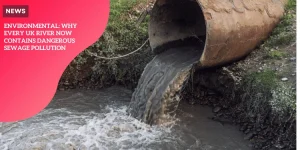WATER SAFETY IN 2025: HOW UK SCHOOLS ARE PROTECTING CHILDREN THROUGH SWIMMING EDUCATION
Drowning Prevention Week 2025 highlights the vital role of schools in teaching children lifesaving water safety skills across the UK curriculum
As summer approaches across the United Kingdom, renewed attention has been placed on children’s water safety education through the national Drowning Prevention Week, held from 14 to 21 June 2025.
With families expected to visit beaches, rivers, lakes, and swimming pools more frequently during the warmer months, the necessity of ensuring that children are properly trained to remain safe in and around water becomes more urgent.
As part of this preventative effort, water safety and swimming proficiency have been incorporated into the National Curriculum for primary school students.
This initiative is being supported by collaborative efforts with several key organisations, including Swim England, The Royal Life Saving Society UK (RLSS UK), and the RNLI.
These bodies work alongside educators to deliver water safety lessons that not only build confidence but also equip children with essential skills for real-world scenarios.
This article provides a comprehensive overview of the water safety curriculum in 2025, government funding allocated to support this educational focus, resources tailored to children with special needs, and the long-term vision for reducing drowning incidents through structured learning.
WHAT DO CHILDREN LEARN IN SCHOOL ABOUT WATER SAFETY?
As part of the UK government’s strategy to reduce drowning incidents, swimming and water safety have been made a compulsory component of physical education for all primary school students.
National Curriculum Requirements
By the end of primary school, students are expected to achieve the following outcomes:
-
Swim a minimum of 25 metres unaided
-
Demonstrate competency in a range of strokes
-
Perform safe self-rescue techniques in a variety of aquatic scenarios
These objectives are part of a national commitment to ensure that every child, regardless of background or geographic location, is capable of navigating water safely.
Risk Awareness and Critical Thinking
In addition to practical swimming lessons, water safety is also taught through the Personal, Social, Health and Economic (PSHE) education programme.
This framework allows students to learn about risk management, decision-making near water, and how to assess environmental factors that could lead to danger.
To further enrich PSHE lessons, the Can
al and River Trust, in collaboration with the PSHE Association, has introduced custom lesson packs for Key Stage 3 pupils.
These new resources emphasize water safety in areas such as canals and rivers, offering flexible, practical lessons designed to resonate with young people across different regions.
HOW SCHOOLS ARE BEING SUPPORTED IN 2025
To strengthen the teaching of water safety and physical education, the UK government has reaffirmed its commitment through increased funding and resource distribution for the academic year 2025/2026.
PE and Sport Premium Investment
The PE and sport premium is a dedicated funding stream that enables primary schools to improve the standard and accessibility of their physical education programmes.
In 2025, schools are encouraged to use this premium to enhance their swimming and water safety curriculum by:
-
Providing specialist teacher training
-
Organising additional swimming sessions for students requiring extra help
-
Investing in equipment, transportation, or pool rental fees for institutions lacking their own facilities
This targeted approach allows each school to tailor its implementation strategy while maintaining national benchmarks for swimming proficiency and safety instruction.
Inclusive Education for Children with SEND
To ensure that children with special educational needs and disabilities (SEND) are not excluded from water safety education, the government is continuing to invest in the Inclusion 2028 programme, led by the Youth Sport Trust.
| Focus Area | Action | Goal |
|---|---|---|
| Adaptive Teaching | Developing strategies for varied physical and cognitive abilities | Accommodate all learning needs and enhance participation |
| Lesson Planning | Creating inclusive swimming lesson plans | Ensure every student can engage and succeed |
| Teacher Training | Equipping educators to teach accessibly and effectively | Improve classroom delivery and student outcomes |
| Online Hub | Offering guides tailored to diverse learning profiles | Support lesson customization for all needs |
| Support Materials | Providing training content for inclusive teaching | Build teacher confidence and effectiveness |
| Case Studies | Sharing real-world classroom implementation examples | Inspire adoption through proven success stories |
WHY WATER SAFETY EDUCATION IS CRUCIAL IN 2025
Despite years of awareness campaigns and curriculum improvements, drowning continues to be a significant cause of accidental death in children across the United Kingdom.
According to recent statistics published by the RLSS UK, more than 400 lives are lost to drowning each year, many of which involve individuals under the age of 18.
Seasonal Hazards and Family Travel
As the weather warms, children are more likely to play near or in water, often unsupervised or without adequate preparation.
Beaches, rivers, lakes, and swimming pools all pose unique risks, and without proper education, even confident swimmers can find themselves in danger.
This seasonal increase in risk is precisely why initiatives like Drowning Prevention Week are so vital.
By placing water safety education at the forefront of national conversation each June, the campaign ensures that families and schools are reminded of the importance of ongoing education and vigilance.
ORGANISATIONS COLLABORATING ON NATIONAL EFFORTS
The comprehensive water safety strategy in 2025 would not be possible without the involvement of multiple organisations that bring expertise, resources, and outreach capacity.
Key Partners:
-
Swim England: Provides curriculum support, teacher training, and instructional resources.
-
Royal Life Saving Society UK: Leads national campaigns and safety awareness efforts.
-
RNLI (Royal National Lifeboat Institution): Offers community education, rescue demonstrations, and safety training.
This collaborative approach allows for continuous refinement of teaching methods, resource sharing, and direct engagement with communities that face the highest water safety risks.
TOOLS AND RESOURCES FOR SCHOOLS AND FAMILIES
A major focus in 2025 has been the development of user-friendly, modern, and interactive resources to help both teachers and parents support children in learning about water safety.
Available Materials:
-
Interactive videos showing how to respond to water emergencies
-
Scenario-based games teaching decision-making in aquatic settings
-
Printable home safety checklists for families
-
School assembly packs for use during Drowning Prevention Week
By blending traditional instruction with digital tools, educators can keep students engaged and reinforce key safety messages through repetition and simulation.
CLOSING THE GAP: MAKING EDUCATION ACCESSIBLE FOR ALL
Not all schools have access to swimming pools, trained instructors, or consistent funding — especially those in rural or low-income areas.
Recognising this, the government has launched targeted accessibility initiatives aimed at ensuring that no student is excluded from learning how to swim and stay safe in the water.
Measures Introduced in 2025:
-
Mobile swimming pool programmes offering on-site access for remote schools
-
National training days to equip general PE teachers with core water safety skills
-
Subsidised transport partnerships to help schools reach local pools
By addressing infrastructure gaps, the government seeks to standardise water safety education regardless of region or financial resources.
FUTURE GOALS AND LONG-TERM STRATEGY
Looking beyond 2025, the UK’s vision for water safety education remains ambitious but focused.
Through continued investment, public awareness, and data-driven policy, the following outcomes are expected by 2028:
-
A national swimming proficiency rate above 95 percent for primary school graduates
-
Full inclusion of SEND students in all water safety activities
-
Wider use of immersive technology, including virtual reality simulations, in classroom settings
Each of these targets reflects a long-term commitment to preventing water-related accidents through proactive and inclusive educational practices.
CONCLUSION: BUILDING A SAFER GENERATION THROUGH EDUCATION
The national efforts surrounding Drowning Prevention Week 2025 and the year-round emphasis on water safety within the UK school curriculum signal a clear and consistent message: water safety is not optional — it is essential.
Through:
-
Mandatory curriculum requirements
-
Strategic funding allocations
-
Inclusive teaching practices
-
Innovative learning tools
-
Strong inter-organisational partnerships
the UK education system is taking meaningful steps toward reducing preventable deaths by building water confidence and safety awareness in every child.
As families prepare for summer holidays, schools remain on the front line of this public safety campaign — preparing children not just for fun in the sun, but for a lifetime of confidence around water.






